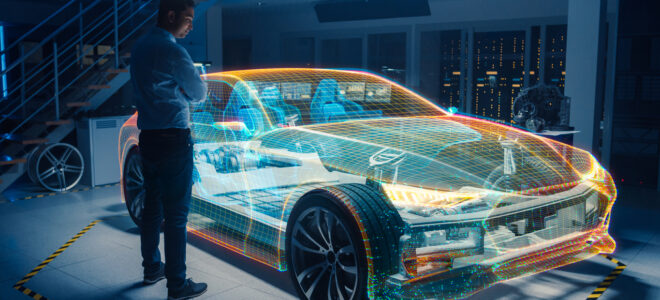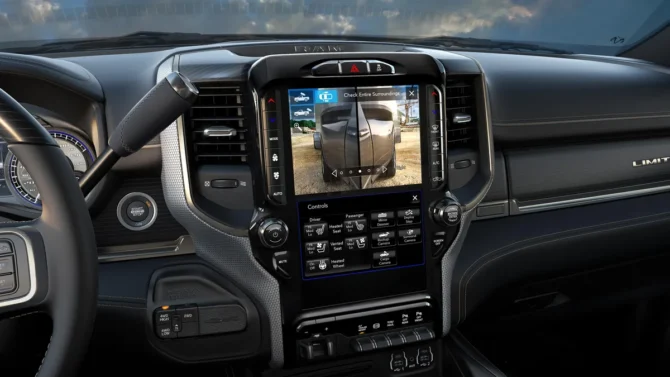
Nowadays, cars are more than just wheels and engines like they once were. Indeed, they’re filled with smart features that make driving easier and safer. This big change is thanks to vehicle digital systems, the brain of your car, controlling everything from playing music to keeping you safe on the road.
But with all these new features, it’s important for everyone who drives, and especially those who also maintain and repair their own vehicles to understand how they work. That’s where car manuals come in handy. They’re not just a book that sits in your glove box; these manuals are your go-to for understanding all the smart parts of your car.
Learning about these digital features might sound tough, but it’s really not. It’s all about getting to know your car better. The digital parts of your car, like the screen that shows maps and the system that helps you park, are there to make your rides smoother and safer.
So, let’s get started! This is all about making the tech stuff easy to understand, so you can make the most of your car’s cool features. Welcome to learning about your car in the digital age!
Digital Components in Vehicles
Vehicle digital systems comprise the smart features that make modern cars feel high-tech and evolved. Things like infotainment and navigation systems, smartphone and internet connectivity, onboard diagnostics (OBD-II), and advanced driver assistance systems (ADAS) — they are digital components that work together to make your car smarter, safer, and more fun to drive.
However, since these systems often work seamlessly behind the scenes, you may not fully realize what they are, how they work, and how to gain access and use them properly. So, over the next few sections, we’ll be dissecting each of these common vehicle digital systems to get you a better understanding.
Just keep in mind, all of the digital features are always covered in your vehicle owner’s manuals, and you can always refer to them whenever you want to know exactly how they work in your vehicle.
Infotainment Systems ─ The Heart of In-Car Digital Experience

Source: cnet.com
Notice the screen in the middle of your dashboard? That’s your car’s infotainment system. It’s the hub of your car’s entertainment and information, pumping out music, navigation maps, and so much more right at your fingertips.
Infotainment systems aren’t just about playing your favorite tunes anymore. They’re fully loaded digital command centers that let you control almost everything without taking your eyes off the road. Want to make a phone call? Easy. Need directions to the nearest coffee shop? You got it. These systems use touchscreens, voice commands, or even gestures to make sure you stay focused on driving while still enjoying the ride.
Moreover, with connectivity features like Bluetooth, Wi-Fi hotspots, and smartphone integration systems like Apple CarPlay and Android Auto, you can now do plenty of things from your infotainment screen, like sending voice messages and accessing your music library. This means no more fumbling with your phone while driving; everything you need is right there on your dashboard.
Whether you’re a tech geek or just someone who enjoys a smooth ride, understanding and using your car’s infotainment system can make every journey more enjoyable and, importantly, safer.
Navigation Systems ─ Finding Your Way with Ease
Navigation systems in cars today are incredibly advanced. They can quickly calculate the best route, taking into account traffic conditions, road works, and even the weather, to get you where you need to go efficiently. They’re like your personal co-pilot, always ready with a plan B if you encounter a delay or decide on a spontaneous detour.
What’s great about these systems is their integration with real-time traffic updates. This means they can warn you about congestion ahead and suggest alternative routes, saving you time and the hassle of sitting in traffic. Plus, with voice-guided directions, you can keep your eyes on the road and hands on the wheel while navigating through unfamiliar areas.
Not to mention, they enhance your driving experience by pointing out places of interest, like gas stations, restaurants, and landmarks along the way. Need a quick coffee break or looking for a scenic spot to stretch your legs? Your navigation system has got you covered.
Indeed, getting lost while driving can be a thing of the past, thanks to modern navigation systems. These clever tools do more than just show maps; they guide you to your destination with ease and precision.
Diagnostic Systems ─ Keeping You Informed About Your Vehicle’s Health
Onboard diagnostics (OBD-II) is essentially your vehicle’s built-in check-up tool. It monitors everything from engine performance to fuel usage and emissions. If something’s not right, it’ll let you know by lighting up that check engine light on your dashboard. This is your cue to check what’s going on.
With the right tools, you can even dive deep into the OBD-II system to get specific codes that tell you exactly what’s wrong. These codes can be a bit cryptic if you’re not familiar with them, but they’re incredibly useful for diagnosing problems.
Worth noting, while it may sound advanced and complicated, the OBD-II is not just for mechanics. With a simple adapter and a smartphone app, you can start to understand your car’s needs and address minor issues before they turn into costly repairs. It empowers you to take control of your car’s maintenance, ensuring it runs smoothly and stays reliable for years to come.
Advanced Driver Assistance Systems (ADAS) ─ Enhancing Safety Through Technology

Source: linkedin.com
Advanced driver assistance systems (ADAS) include a variety of features designed to assist you in different driving scenarios. For instance, adaptive cruise control adjusts your speed to maintain a safe distance from the car ahead, making long drives less tiring. Lane-keeping assist gently nudges you back into your lane if you start to drift without signaling, helping prevent potential accidents. And with features like automatic emergency braking, the car can apply the brakes if it detects an imminent collision, often faster than a human can react.
But ADAS isn’t just about avoiding collisions; it’s also about making driving easier and less stressful. Features like parking assistance take the guesswork out of tight parking spots, and rearview cameras give you a better view of what’s behind you, making reversing safer and more precise.
Indeed, driving has become easier and significantly safer thanks to advanced driver assistance systems (ADAS), and there’s no denying they’re revolutionizing the way we drive.
Digital Security and Privacy Considerations
Digital security in modern vehicles is about safeguarding the technology that keeps us connected and safe on the road. With cars constantly communicating with external networks, there’s a risk of unwanted intrusion. Hackers could potentially access a car’s systems, leading to privacy breaches or even taking control of vehicle functions. It sounds like something out of a sci-fi movie, but it’s a real concern that manufacturers and drivers alike need to address.
Cybersecurity risks are not just about the unauthorized access to personal data but also about the safety implications. If someone were to gain control over a car’s operational functions, the results could be dangerous. That’s why the industry is putting a strong emphasis on developing robust security measures, including encryption and secure software updates, to protect against these threats.
Meanwhile, digital privacy is about ensuring that the vast amounts of data generated by our vehicles are used responsibly. From location tracking to behavior monitoring, cars can collect detailed information about our driving habits. Ensuring this data is used ethically and stored securely is important to maintaining our privacy on the road.
As drivers, it’s essential to be aware of these considerations. By staying informed about the digital security measures in place and advocating for strong digital privacy protections, we can enjoy the benefits of our digitally advanced vehicles without compromising our safety or personal information.
Maintenance and Troubleshooting of Digital Systems

Source: customcompleteautomotive.com
Maintenance of digital systems involves regular updates, just like you would with the smartphone in your pocket. These updates can improve features, fix bugs, or improve security. Sometimes, they happen automatically, and other times, you might need to visit your dealer or use a specific app.
When it comes to troubleshooting digital systems, the first step is often checking for any updates or resets that can fix common issues. For example, if your infotainment system is acting up, a simple reset might be all it needs. However, some problems can be more complex, like connectivity issues or error messages from your car’s diagnostic system. That’s when it’s time to dig a little deeper, maybe with the help of online forums, your car’s manual, or a professional technician.
Understanding the basics of maintenance and troubleshooting for your car’s digital systems helps keep everything running smoothly and saves you time and money. It enables you to fix minor issues on your own and makes you a more informed owner when it comes to discussing any problems with professionals.
Future Trends in Vehicle Digitalization
The journey of in-car technology is heading towards even more connectivity, smarter safety features, and an increasingly seamless integration between our digital lives and our driving experiences. From autonomous driving to augmented reality (AR) integration, it’s only about time these future trends in vehicle digitalization will come to life.
Personalization of driving experiences is a key future trend. Cars will learn from your habits and preferences, adjusting everything from seat position to the temperature before you even step inside. Voice recognition technology will advance to understand not just commands but context and emotion, making interactions with your car feel more natural.
Connectivity features will also expand beyond smartphones to include a broader range of devices, turning your car into a truly connected hub. Imagine your car communicating with your home to turn on the lights and adjust the thermostat as you near home.
Not to forget, future trends in vehicle digitalization will also focus on eco-friendly technologies, with EV (EVs) becoming smarter for overall improvement in sustainability.

Source: linkedin.com
Last Words
The technology in our cars is not just here to stay; it’s set to get even better and smarter. From enhancing our safety to keeping us connected on the go, the future holds exciting advancements that will continue to transform our driving experiences.
So, the best time to get acquainted with these digital features is right now. And remember that you can always access information on them in your car manuals, where it hosts information on how exactly all these features work.
By embracing and learning about the technology at our fingertips today, we’re setting ourselves up for a safer, more enjoyable, and incredibly futuristic drive down the road.



